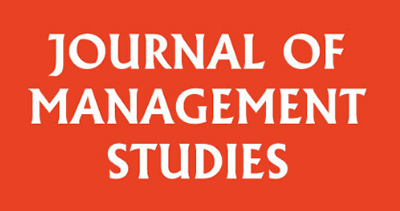
Summary
Our paper, published in the Journal of Management Studies, addresses the ongoing debate on the impact of datafication technology on employees in organizations. It proposes that datafication technology can create surprises in the workplace, highlighting employee vulnerability and prompting employees to more actively consider whether or not they can trust their employer. During this time, to protect and strengthen the employment relationship, organizations should engage in active trust management through symbolic and substantive strategies. The paper contributes to the understanding of trust by exploring vulnerability as a mechanism for changing the way in which employees trust organizations and by introducing a framework for organizations to navigate the challenges of technology-permeated workplaces while preserving and enhancing trust.
Why should you read this as a researcher?
This paper expands the scope of trust research in several significant ways. Firstly, it contributes to our understanding of how “smart” technology, such as AI-powered assistance systems and self-learning performance and controlling systems, reshapes the fabric of human interactions within organizations. It highlights that trust in the employer might be the decisive variable to consider in the AI-technology-trust conundrum. Secondly, the paper introduces a novel framework that links vulnerability to core trust issues, distinguishing between two types: discontinuity and socio-emotional existential vulnerability. It argues convincingly that salient vulnerability changes how employees trust organizations and that different forms of vulnerability necessitate distinct trust responses from the organization. Finally, drawing on the authors’ prior work, the paper presents a dual-process perspective on trust, outlining why and how organizations should proactively address employees’ perceived vulnerability through active trust management strategies. These strategies encompass both symbolic and substantive approaches, providing organizations with practical guidance in navigating the complexities of trust in a technology-driven workplace.
Why should you read this as a leader or CHRO?
In navigating the challenges posed by the AI-technology-trust conundrum, practical strategies for active trust management can foster an environment where employees thrive and organizations realize the benefits of technological advances. This article presents two sets of strategies: symbolic and substantive, aimed at building trust within organizations.
Symbolic Strategies: Creating a Credible Narrative
To address the vulnerability experienced by employees during smart technology proliferation, organizations can employ symbolic actions to establish trust. Here are some recommended approaches:
- Conduct comprehensive digital literacy training programs, empowering employees with skills in information and data literacy, communication and collaboration, digital content creation, and problem-solving.
- Invest in technology that features self-explanatory and justifiable designs, ensuring intuitive interpretation, feedback options, and trusted third-party auditing/certification.
- Demonstrate your moral obligation by deploying enabling technology that fosters employee participation, offers learning-oriented feedback, and provides employees with a certain level of control.
Substantive Strategies: Interest Alignment
To concretely manifest trust and align interests in technology-driven workplaces, consider implementing the following strategies:
- Define leadership roles that bridge the gap between technology and employees, emphasizing qualities such as compassion, emotional competence, and responsibility.
- Promote formal mechanisms for employer-employee co-creation, involving super users and early adopters throughout the implementation process.
- Invest in stakeholder involvement and decision-making processes, such as technology impact assessments and issue-driven councils, to balance vulnerability and foster a sense of shared ownership.
By implementing these practical strategies, organizations can actively manage trust, creating an environment where employees feel empowered, supported, and valued amidst the ever-evolving landscape of technology.

0 Comments